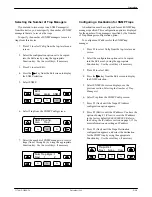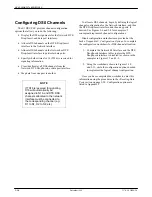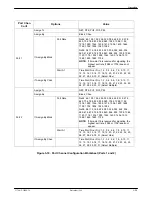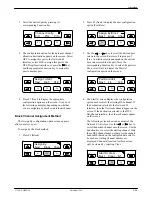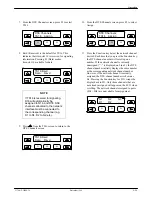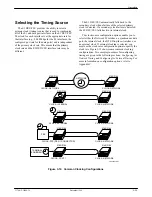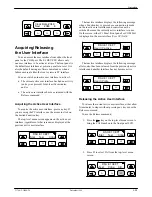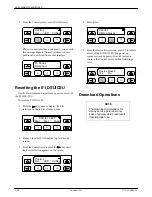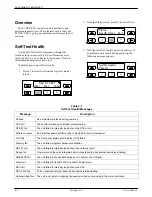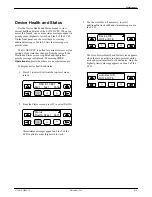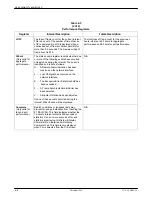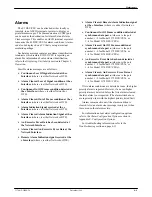
Operation
3-33
3170-A2-GB20-20
December 1996
Selecting the Timing Source
The E1 DSU/CSU provides the ability to select a
primary clock (timing) source that is used to synchronize
all of the E1 and data port interfaces on the E1 DSU/CSU.
The clock for each interface is at the appropriate rate for
that interface (e.g., 2.048 Mbps for the E1 interfaces, the
configured port rate for the data ports) and is independent
of the primary clock rate. This means that the primary
clock rate and the E1 DSU/CSU interface rates may be
different.
The E1 DSU/CSU automatically falls back to the
secondary clock when a failure of the selected primary
clock is detected. If a secondary clock failure is detected,
the E1 DSU/CSU falls back to its internal clock.
The clock source configuration options enable you to
select either the Network E1 interface, a synchronous data
port, the internal clock, the DTE Drop/Insert interface, or
an external clock. If external clocking is selected, you
must use the clock rate configuration option to specify the
clock rate. Figure 3-12 shows some common clocking
configurations. Two sample procedures for configuring
timing are given in the following sections, Configuring for
Network Timing and Configuring for External Timing. For
more information on configuration options, refer to
Appendix C.
496-14341a-01
3160/3164
NETWORK
CLOCK: NETWORK
3160/3164
CLOCK: NETWORK
3160/3164
CLOCK: NETWORK
CLOCK: INTERNAL
3160/3164
3160/3164
CLOCK: EXTERNAL
3160/3164
CLOCK: NETWORK
PBX
CLOCK: DTE (DSX-1 CONNECTOR)
3160/3164
CLOCK: NETWORK
3160/3164
TERMINAL
EQUIPMENT
CLOCK: PORT 1
3160/3164
CLOCK: NETWORK
3160/3164
Figure 3-12. Common Clocking Configurations

